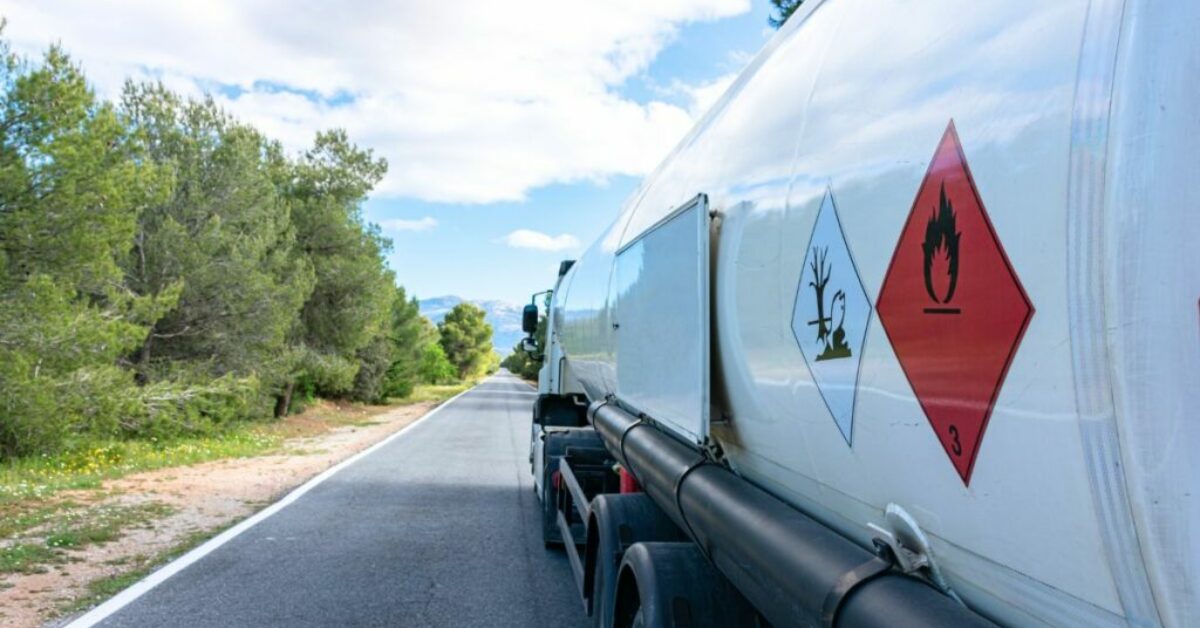How To Become A Hazmat Driver?
If you’re interested in a career in the delivery or transportation industry, you may be wondering how to become a hazmat driver. Hazmat or hazardous materials drivers are those who transport dangerous and hazardous materials from one location to another. This is a specialized and challenging job that requires a specific set of skills and knowledge, as well as a dedicated commitment to safety. Let’s look at the steps of becoming a hazmat driver.
Steps To Becoming A Hazmat Driver
Becoming a hazmat driver is a rewarding and challenging career choice that requires a high level of responsibility and expertise. If you are interested in pursuing this career, there are several steps you need to take to become a certified hazmat driver.
- Obtain a Commercial Driver’s License (CDL)
The first step to becoming a hazmat driver is to obtain a commercial driver’s license (CDL) from your state’s department of motor vehicles (DMV). A CDL is mandatory for all professional drivers who want to operate large commercial vehicles, including trucks, trailers, and buses. To get a CDL, you need to pass a written test and a driving test, which differ depending on your state. You can find a CDL study guide online and take practice tests to prepare for the final exam.
It is important to note that there are different classes of CDLs, and each class allows you to operate a specific type of commercial vehicle. For hazmat drivers, a Class A CDL is required, which allows you to operate a combination of vehicles with a total weight of 26,001 pounds or more. - Complete Specialized Training on Hazardous Materials Transportation
After obtaining your CDL, the next step is to complete specialized training on hazardous materials transportation. This training is mandatory and required by the U.S Department of Transportation (DOT). You need to attend a training course that is certified by the DOT. This course teaches you about the regulations and safety procedures for transporting hazardous materials, including how to handle spills, accidents, and emergencies.
The hazmat training course covers a wide range of topics, including the different classes of hazardous materials, packaging and labeling requirements, loading and unloading procedures, and emergency response protocols. The course also includes hands-on training, where you will learn how to use personal protective equipment (PPE) and hazardous materials handling equipment. - Pass a Hazardous Materials Endorsement Test
After completing the training course, you need to pass a hazardous materials endorsement test, which includes specific questions related to the transportation of hazardous materials. You need to study well for this exam, as it covers a broad range of topics that can affect both the driver and the public’s safety.
The hazmat endorsement test covers topics such as the proper use of PPE, emergency response procedures, and the different classes of hazardous materials. You will also need to pass a background check and provide fingerprints to obtain your hazmat endorsement. - Maintain Your Hazmat Certification
Once you have obtained your hazmat certification, you need to maintain it by completing regular training and passing a knowledge test every two years. The DOT requires hazmat drivers to complete at least three hours of training every two years to stay up-to-date with the latest regulations and safety procedures.
It is also important to note that hazmat drivers are subject to regular inspections by the DOT to ensure that they are following all the regulations and safety procedures for transporting hazardous materials.
Becoming a hazmat driver requires a significant amount of training, expertise, and responsibility. However, it can be a rewarding career choice for those who are passionate about transportation and safety. If you are interested in pursuing this career, make sure to follow the steps outlined above and stay up-to-date with the latest regulations and safety procedures.
Skills Needed For Becoming A Hazmat Driver
Besides obtaining a CDL and completing specialized training on hazardous materials transportation, there are some critical skills that you need to possess to become a successful hazmat driver.
Firstly, you need to have an excellent driving record and a clean criminal background and drug test record. As a hazmat driver, you will be responsible for transporting hazardous materials, which requires utmost care and attention. A single mistake can be catastrophic, so it is essential to have a clean record and a good driving history.
Secondly, you need to be physically fit and able to carry heavy materials, handle various equipment, and work in various weather conditions. The job of a hazmat driver is physically demanding, and you need to be in good shape to handle the tasks involved. You will be required to load and unload heavy materials, operate specialized equipment, and work in extreme weather conditions.
Moreover, you need to have excellent communication and problem-solving skills to interact with clients, other drivers, and transportation authorities. As a hazmat driver, you will be dealing with various stakeholders, including clients, other drivers, and transportation authorities. You should be able to communicate effectively, both verbally and in writing, and be able to resolve any issues that may arise during transportation.
Furthermore, you should be able to make quick and accurate decisions in high-pressure situations, act calmly and responsibly, and prioritize safety at all times. Hazmat transportation can be a high-pressure job, and you need to be able to think on your feet and make quick decisions. Safety should always be your top priority, and you should be able to act responsibly in any situation.
Becoming a hazmat driver requires a combination of technical, physical, and soft skills. By possessing these skills, you can ensure that you are a successful and safe hazmat driver.
What is A Hazmat Driver?
A hazmat driver is a professional driver who transports dangerous and hazardous materials from one location to another. This includes materials that are poisonous, flammable, radioactive, or explosive. Hazmat drivers follow strict safety and compliance regulations set by the Department of Transportation (DOT) to ensure that both the driver and the public are protected from accidents, spills, and emergencies. Hazmat drivers work for various industries, including chemical, pharmaceutical, and oil and gas companies.
Hazmat drivers must also have a strong attention to detail and be able to follow strict procedures. They must inspect their vehicles and equipment before every trip to ensure that everything is in good working order. They must also follow specific loading and unloading procedures to prevent spills or leaks.
One of the biggest challenges for hazmat drivers is dealing with emergencies. If there is an accident or spill, hazmat drivers must know how to respond quickly and safely. They must have the proper equipment and training to contain the spill and prevent it from spreading. They must also be able to communicate effectively with emergency responders and the public.
Despite the challenges, many hazmat drivers find their work rewarding. They play a critical role in keeping dangerous materials out of the hands of criminals and terrorists. They also help ensure that these materials are transported safely and securely, protecting both the driver and the public.
The Benefits of Working as A Hazmat Driver
Working as a hazmat driver comes with several benefits. For one, it offers excellent job security, as there is a constant demand for drivers who can handle hazardous materials safely. The transportation of hazardous materials is an essential part of many industries, including healthcare, manufacturing, and agriculture. Therefore, the need for qualified hazmat drivers is always high.
Secondly, hazmat drivers earn a higher salary than regular commercial drivers due to their specialized skills and training. According to ZipRecruiter, the average salary in the United States is around $59,465/year as of December 2024.
The transportation of hazardous materials requires extensive knowledge of safety protocols, regulations, and emergency procedures. Hazmat drivers must also undergo rigorous training to obtain the necessary certifications and licenses to transport hazardous materials. Due to the high level of responsibility and specialized skills required, hazmat drivers are compensated accordingly.
Additionally, many employers offer bonuses and incentives for safe driving and excellent performance. Hazmat drivers are responsible for transporting dangerous materials, and safety is of utmost importance. Employers often offer incentives for safe driving, such as bonuses or paid time off, to encourage drivers to prioritize safety on the job.
Lastly, working as a hazmat driver is a challenging and rewarding experience that provides you with opportunities to travel, work independently, and learn new skills. Hazmat drivers must be able to adapt to changing schedules, routes, and weather conditions. They also have the opportunity to travel to different parts of the country and experience new places. Hazmat drivers work independently, which provides them with a sense of autonomy and responsibility. Additionally, hazmat drivers must constantly stay up-to-date on safety regulations and procedures, which provides them with opportunities to learn and grow professionally.
However, it’s important to remember that this is a high-stress job that requires a strong commitment to safety and responsibility at all times. Hazmat drivers must be able to handle stressful situations, such as accidents or spills, with calmness and efficiency. They must also prioritize safety above all else, as the consequences of mishandling hazardous materials can be severe. Therefore, hazmat drivers must be responsible, detail-oriented, and able to handle pressure.
In summary, becoming a hazmat driver is a multi-step process that involves obtaining a CDL, completing specialized training on hazardous materials transportation, and passing a hazardous materials endorsement test. In addition to these steps, you need to possess critical skills such as excellent communication, problem-solving, and excellent driving and criminal records. Working as a hazmat driver comes with several benefits, including job security, high salary, bonuses, and incentives, and the opportunity to travel, learn, and work independently. However, it’s important to remember that safety and responsibility should always be a top priority in this challenging and rewarding career.




